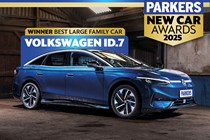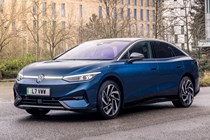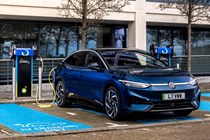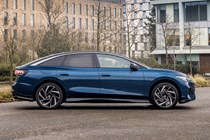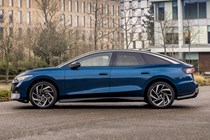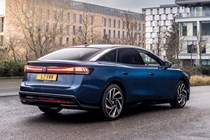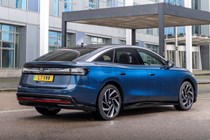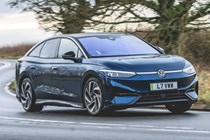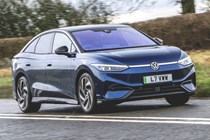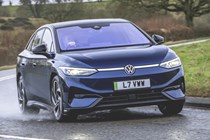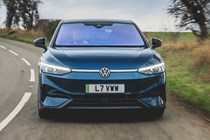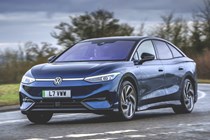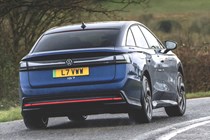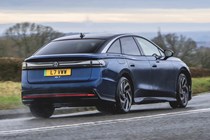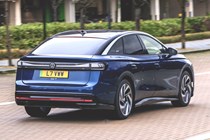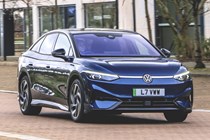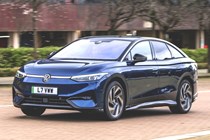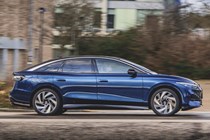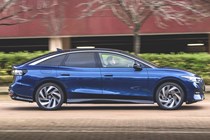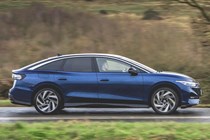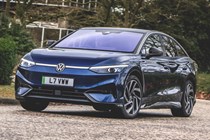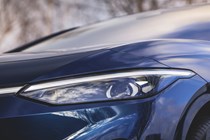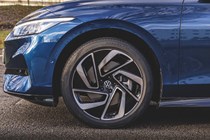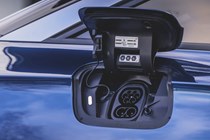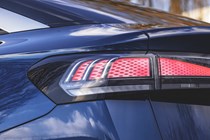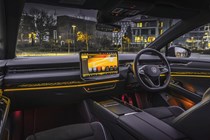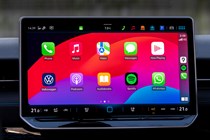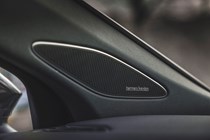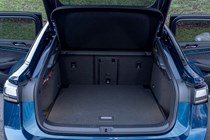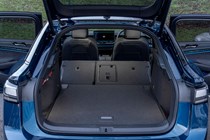
Volkswagen ID.7 engines, drive and performance
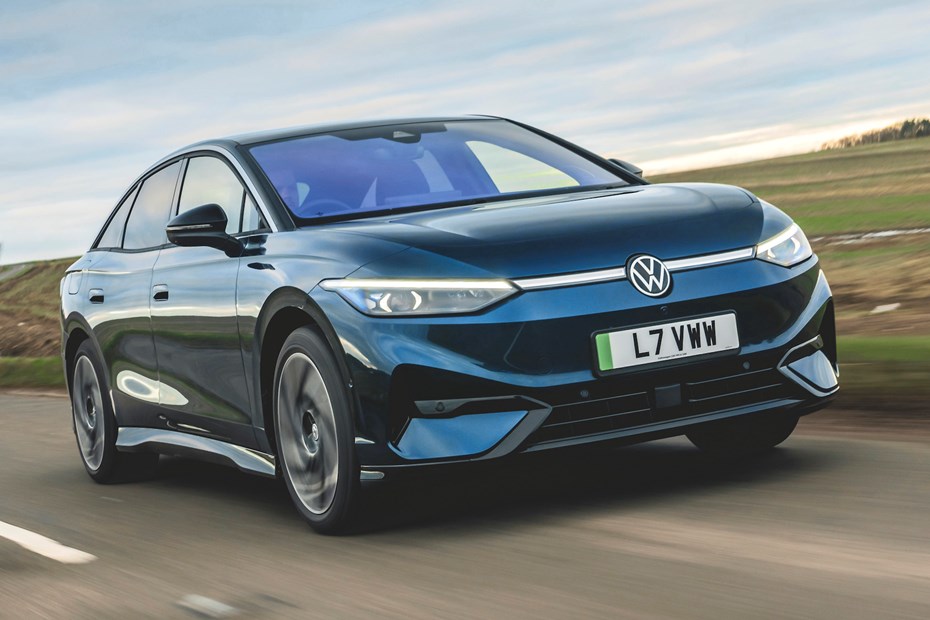
- Two power outputs available
- Effortless, undramatic and refined performance
- Excellent ride comfort?
What power options are there?
Volkswagen offers the ID.7 with three versions – the Pro Match, Pro S Match and top-spec GTX.
Both Match models are powered by a rear-driven electric motor producing 286hp, with the Pro version using a 77kWh battery and the Pro S packing the newer 86kWh battery – the largest fitted to any electric Volkswagen. It takes 6.5 seconds to accelerate to 62mph for the Pro version, with the additional weight of the larger battery adding a marginal tenth of a second penalty to the Pro S’s acceleration times, but we’d struggle to tell the difference in real-world driving.
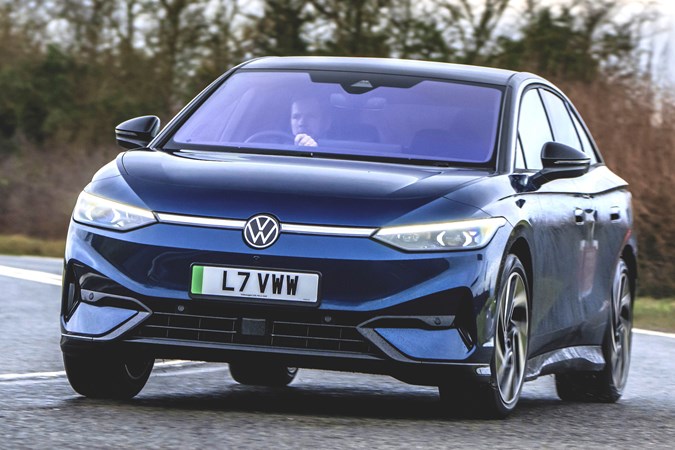
At the top of the line-up is the GTX, the nameplate reserved for Volkswagen’s sportier all-wheel-drive electric models. The ID.7 GTX gets a second electric motor that takes the total power up to 340hp, and reduces the 0-62mph in 5.4 seconds.
For most drivers, the standard model will be more than adequate for joining fast-moving traffic, and though the GTX is noticeably quicker, rivals such as the Tesla Model 3 Performance or BYD Seal Excellence would leave it for dead away from the lights. But in reality, ballistic acceleration is a range-sapping party trick you soon tire of – and once you accept that and relax, the ID.7’s effortless pace really suits the car.
What’s it like to drive?
- Quick and accurate steering
- Safe handling
- Comfortable ride
The ID.7 is everything you’d expect from a flagship car as long as you accept it’s not going to overload you with feedback. So, it’s quiet and comfortable, and that quick acceleration is backed up with the ability to cover big distances without stressing the driver. Wind and road noise are agreeably muted, the steering is light, and the ride is compliant, well-damped and soft enough to leave you feeling unruffled.
Switch over to Sport mode and the ID.7’s adaptive chassis control sharpens up the acceleration and firms up the ride, but it remains composed no matter what you do. The only dynamic criticism we could level at it is that there’s a little pitter-pitter on typically pockmarked UK roads, so it never completely settles down.
This isn’t a car you’ll want to push, but even with a heavy right foot, the ID.7 is stable. It’s rear-wheel drive, though you’d never really know – and it’s doubtful most customers would care. Even in slippery winter conditions, the rear wouldn’t misbehave without severe provocation, which is reassuring for its safety.
Finally, the brakes are typical of that in an EV and give away some pedal feel for regeneration. Select ‘B’ mode to increase the amount it slows down when you lift off the accelerator, but it’s never enough to facilitate one-pedal driving, like a Tesla Model 3. Similarly, the steering is light rather than full of feedback, but that goes hand in hand with the aims of this car.
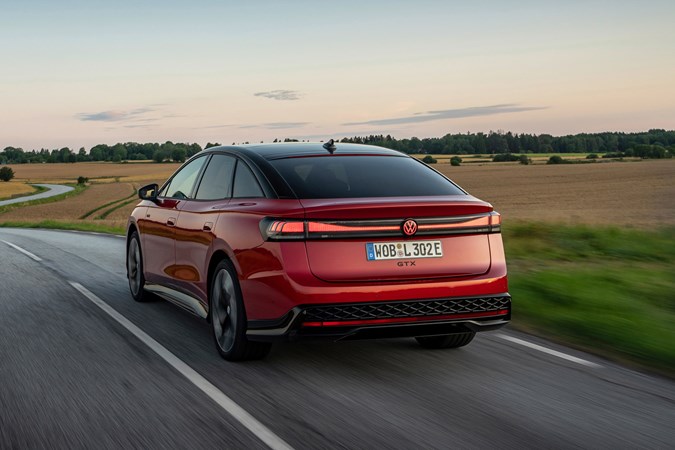
If you want something a bit more lively, the GTX turns up the heat, albeit only slightly. The handling is sharper thanks to a revised steering rack and the traction more pronounced from its all-wheel-drive setup. It’s noticeably quicker, but the standard car is not exactly slow.
Adaptive dampers (known as DCC by Volkswagen) are fitted as standard to the GTX, rather than optional like they are with the rest of the line-up. With DCC, through a bar on the touchscreen you can select which level of comfort or sportiness you would like from the ride, from very soft and supple to firm. It’s an impressive setup, as even on our test car’s large 21-inch alloy wheels, the ride quality and refinement remain exceptional. The GTX is really more of a trim level than a proper performance car, though.


